What are shotgun chokes, what do they do, what effect do they have on the effectiveness of your shots, and how to choose the best ones? We’ll take a look at all these points with the aim of improving your results, when hunting or in competitions.
As is often the case, due to a lack of knowledge on the subject or an excess of zeal or in the search for absolute perfection, for many shooters and hunters chokes can become something of an obsession.
If I use a different cartridge do I have to change the choke? Is cartridge performance lost due to the wrong choke, or is it the wrong cartridge for these chokes?
It depends! It may be one of several things.
The problem is understanding how and what to do if you’re not satisfied with your spread and, above all, your results.
Let’s start with the basics: who invented chokes for smoothbore shotguns?
Initially all smoothbore guns had regular cylinder bore barrels. In other words they were the same diameter in the core and at the muzzle (at the end of the barrel). With shot it was necessary to obtain a suitable spread at ranges up to 25/28 meters, but more often than not the spreads were irregular at ranges of over 30 meters.
The only solution to improve the density and increase the chance of hitting game at longer ranges with an effective spread was to use shotguns with very long barrels, which also improved aiming precision as you have an extended line of sight. One good example of this is old English shotguns.
As early as 1873 European hunters heard that the Americans had started using an innovative method to bore shotgun barrels, creating a choked section towards the end to obtain more compact spreads, producing notably better ballistic performance than the usual, ubiquitous cylinder bore barrel.
The English, who’ve always been fine gunsmiths, immediately rose to the challenge. As soon as they learnt of this new barrel, the biggest gunsmiths such as Scott, Greener, Purdey, Rigby and Dougall started doing research to produce their own barrels that narrowed towards the end, and used the same in the competitions that were now being held all over the world.
This was just the start!
So, it’s easy to see why chokes were a real revolution for all smoothbore shotguns, extending the range, making spreads more compact and denser, optimized to shoot targets at longer ranges.
For clay pigeon shooting, which was very popular at the time, the effectiveness of choked barrels was immediately obvious, unequivocally proving this innovation was superior to anything that had come before, in particular for your second barrels used to take a shot at a longer range at the very limit of the enclosure.
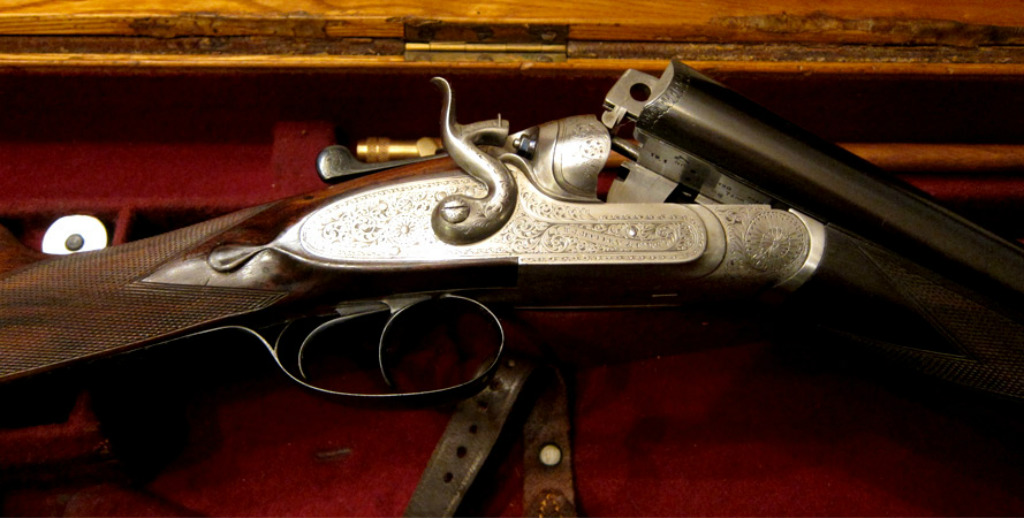
An old Greener shotgun with external hammers.
Of the many companies involved in the development and refinement of chokes, a gunsmith producing harquebuses called Greener, who had perhaps already done quite a bit of research into choked barrels even before the Americans, after various tests, made a name for themselves.
Greener in fact, became known for manufacturing barrels that could produce very dense and compact shot patterns with a high shot percentage (210 / 230 No. 6 pellets in a 76 cm target at a range of 36 meters).
They proved it too! In fact, in a competition:
- The Greener shotgun produced shot patterns with 228 and 221 hardened lead English No. 6 pellets
- The Scott shotgun produced shot patterns with 226 and 153 pellets, respectively hardened lead No. 6 and black lead No. 6
- The Dougall shotgun produced shot patterns with 191 and 182 pellets in the same conditions and at the same ranges.
Choked barrels, as well as improving the density of the spreads also did a lot to improve penetration, which increased by about 20%.
This was because the air friction that causes delay had less of an effect on pellets travelling the first few meters in a very dense swarm compared to those fired out of cylinder bore barrels.
Conserving more energy obviously meant more residual energy at long ranges so greater penetrating power, which was measured using fir wood or counting how many sheets of paper the pellets managed to penetrate.
Chokes haven’t always or only been conical, in time, as well as chokes with a conical profile, ones with parabolic profiles (Perazzi) and recently hyperbolic profiles (Fabarm) have been produced.
The American idea inspired European gunsmiths, and choked barrels became so popular that today all smoothbore shotgun makers use chokes to improve the performance of their guns.
During the last century, many gunsmiths realized that it would be a much better idea to be able to change the choke on a gun so it would be better suited for different hunting conditions depending on the environment and the type of game being hunted.
Being able to change the choke by simply changing the last part of the barrel with the choke made shotguns a lot more versatile as they could be adapted to any conditions, and used for hunting or competitions.
What are chokes for hunting and competition shotguns?
Even today, a shotgun choke system can be fixed so it’s designed and made by conically boring the end of the barrel, as was originally done by Greener, or you can use interchangeable chokes.
In the latter case you fit tubes called “chokes” to the end of the barrel. There are external and internal chokes, chokes that extend the length of the barrels and ones that fit into the last part of the barrel, threaded on, or in a few cases held in place by a locking ringnut that screws onto the barrel.
One of the first Italian gunsmiths to start an in-depth study on the development of interchangeable chokes was BREDA a gunsmith from Brescia, who developed a choke that screwed onto the outside of the muzzle.
It was called the Quick Choke and was locked in place by a tiny wire spring, which protruded from the area near the front sight and engaged with a crown on the part at the base of the choke with the largest diameter when screwed on.

BREDA developed six standard chokes (from 0.00 to 1.00 mm.) plus a spreader, and later added a special SuperFull (1.20 mm.) choke for very long range shots.
Soon after Perazzi fitted chokes on their MT6 (on both barrels) and Grand’Italia (on just the 1st barrel) using short internal interchangeable chokes that had an external knurled crown on the end.
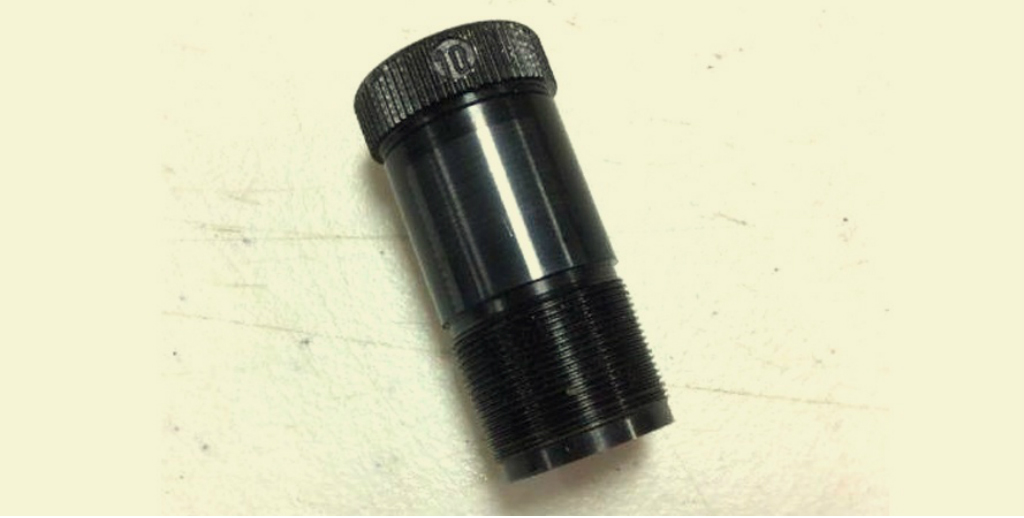
In 1980 Beretta presented its A302 automatic with short interchangeable Mobilchoke chokes held in place by a big locking ringnut screwed onto the end of the barrel. Their next mod. A303 had chokes of a similar design, but without the locking ringnut, as they had their own thread on the end.
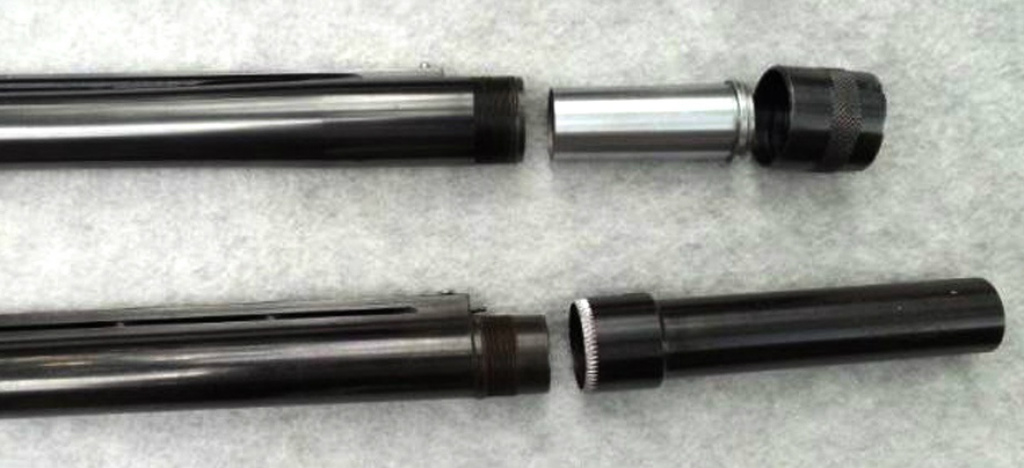
Many companies immediately started specializing in the production of chokes. The first to produce “Choke Tubes” were American companies like Briley, Carlsons, Trulock, etc.
Gemini opened in Italy a few years ago, a company specialized in producing fine chokes of every brand, design and degree of restriction.
You’d be hard pressed today to find a modern shotgun with fixed chokes as almost all are designed for interchangeable chokes, with various degrees of restriction. This obviously makes a gun much more versatile and perfectly adaptable to various types of hunting and environmental situations.
One very simple way to explain how a choke works is to compare it to an adjustable sprinkler. If you open it, the jet of water will be wider but you won’t be able to reach plants further away. If you close it, the jet is narrower but reaches further.

The hose is the barrel of the gun, the water represents the pellets, and the adjustable sprinkler is the choke.
The most common chokes for smoothbore shotguns
There are many different chokes, but major gunmakers mostly use 5 on hunting shotguns:
- Full Choke: *
- Three quarters (Improved Modified): **
- Medium (Modified): ***
- Cylinder Modified: ****
- Cylinder: *****
As well as these basic chokes there are also extreme chokes with more choked profiles (Ultra Full) or bottleneck profile, or spreader chokes (Skeet).
The extreme chokes are designed to produce very compact spreads and are mostly used for hunting waterfowl and turkey, while spreaders are used for hunting game at very close ranges in woodland or for skeet.
Chokes are classified, as is the typical European custom, on the basis of the choke value, marking them in various ways. In the past they were marked with the two entry and exit bore diameters in millimeters, but in modern times asterisks, stars or crosses are used that refer to the specified values.
The higher the number of asterisks or stars, the more open the choke is so more effective at short ranges, while for longer range shots a choke with fewer stars or just one star is used.
Full chokes
These are the most extreme chokes available for smoothbore shotguns.
This is clearly the ideal choice when hunting or shooting in competitions at very long ranges. A “Full” choke barrel produces narrow and centralized spreads, that delay dispersion and can even reach ranges of 45 / 50 meters when using suitable cartridges with heavy loads.
In 12-gauge guns a Full Choke varies from 9 - 11 tenths and produces a dense spread usually with an 80 - 90% shot percentage on the classic 76 cm pattern plate at a range of 36 meters.
This choke is widely used when hunting waterfowl with decoys and bird calls, for hare at the end of the season, for wood pigeon near flyways, in the US for wild turkey, and in competitions it’s used in the second barrel for many disciplines.
As mentioned above, as shotgun and choke design was perfected over the last 20 years with specific guns and chokes being developed for hunting turkey or certain types of goose hunting, even more extreme chokes were developed that reach 14 / 16 tenths, called Ultra Full, Turkey or Goose Chokes.
Most people don’t know this but it’s useful to know that the choke restriction drops proportionally as the gauge or bore size changes. In other words for smaller bore sizes, the choke will also be less extreme. On a .410 for example a Full choke at most will be 5 / 6 tenths.
Cylinder bore barrel or 5 star chokes
There’s not much to say about the cylinder choke, which in reality isn’t a choke at all and is the opposite of a Full Choke. In this case the barrel isn’t choked and it’s bored out to the same diameter all the way to the muzzle.
The pellets aren’t restricted in any way as they leave the muzzle. This produces a wider spread which will only be changed by the type of cartridge and to a great extent the wad used.
Cylinder bore barrels are used at short ranges such as 18 / 25 meters.
They’re used therefore to make it easier to hit targets that are acquired at closer ranges, especially small fast-moving targets, a task made easier by a wide spread.
They’re used for quail, when hunting pheasant with a gundog, for woodcock and in Skeet competitions. Unchoked barrels are also ideal for slugs. In fact “Slug” barrels are perfectly cylindrical.
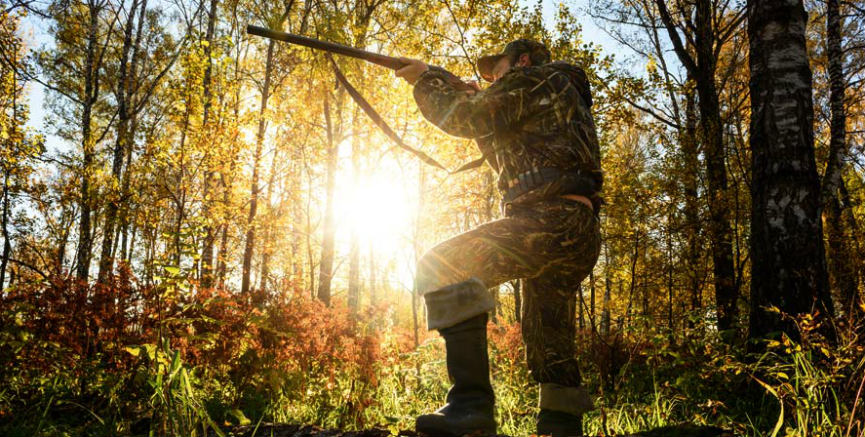
When hunting in dense vegetation a cylinder bore barrel is often a must, because most of your shots will be taken at very close range, and the thick foliage makes long range shots impossible.
Modified cylinder or four star chokes
Cylinder chokes can create excessive dispersion and spreads that aren’t fully effective in some hunting situations, and sometimes just a few meters more range would be enough!
This occurs when firing at a variety of ranges and often at intermediate ranges (28 / 30 meters) or when hunting game with a pellet size that’s rather large for that particular game.
In these cases it’s practically impossible, due to the wide dispersion of the spread, to place the required five pellets within the profile of the game when using cylinder chokes. In this case what’s known as an improved cylinder or (****) choke produces a perfectly balanced spread.
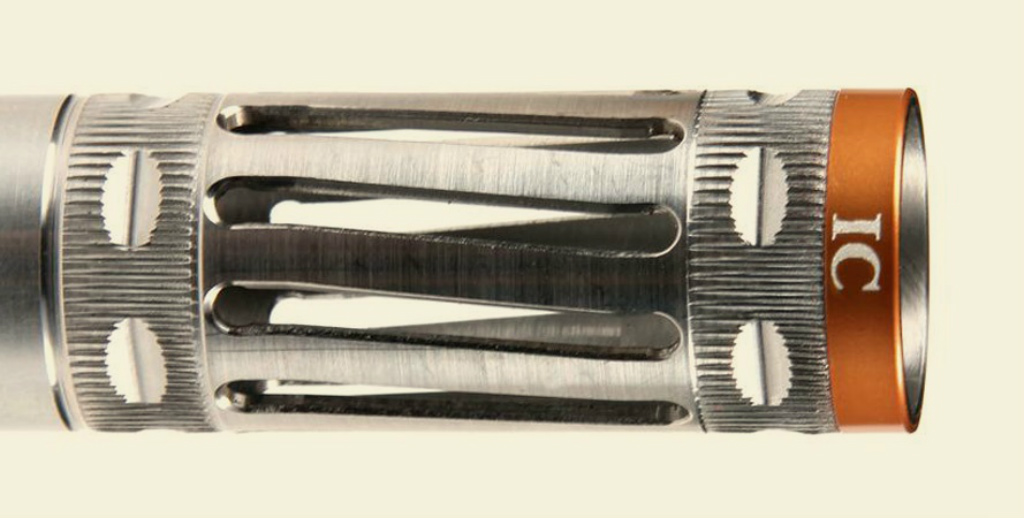
A Briley interchangeable choke with compensation holes.
The improved cylinder choke, compared to the barrel bore, has a choke at the muzzle of 2/3 tenths of a millimeter and at a range of 36 meters produces a shot pattern density in which 50% of the shot in the cartridge tested will be placed in the usual 76 cm pattern plate.
This choke, unlike the cylinder choke, has an ace up its sleeve and when necessary gives you perfect ballistic performance up to ranges of 30 / 32 meters, when using “Long Range” cartridges that conserve a lot of energy and spread density.
When this choke is used with spreader ammo, or with a felt wad in a roll crimped case, it produces the same effect as a cylinder bore barrel, but with the right cartridge and tightish spreads it’s similar to a medium choke and can reach ranges of over 30 meters.
Modified or 3 star chokes
The modified or *** choke is the best medium choke and the most widely used not to mention the most versatile for most types of hunting and, in your first barrel, for many competition specialties too.
The choke values in this case are from 4 to 6 tenths, so half that of a Full choke.
In a 12 gauge a medium or *** choke, also called "Modified” in the US, produces a spread density with 55% to 65% of the pellets in the load in a 76 cm pattern plate at a range of 36 meters.
The fine balance of the medium choke values produces more and very regular, well-distributed shot patterns than other more open or closed chokes.
The medium choke can be used for most types of hunting and almost all feathered or furred game.
Thanks to its optimal range of use at medium ranges (25 - 35 m), you can find the best combination for the particular situation you’ll be hunting in by simply evaluating the shot pattern properties of different cartridges.
In fact, the only way to choose the perfect cartridge/choke combination is to test your gun and cartridges on the target you want to hit, to find the best possible performance. I recommend reading the following article if you want to find out how to do just that.
There are many tables online that show the percentages of pellets that hit the target on the basis of the chokes used at various ranges.
While this information is useful to understand the logic and purpose of the chokes, all these values shouldn’t be taken as gospel.
The first reason: is because there can be a huge difference in performance from one cartridge to the next.
The second reason: is because, as we’ve seen, one choke can cover various different values (for example *** 4/6 tenths of a millimeter) with different effects on the spreads.
So in these terms it’s preferable to specify the choke precisely in tenths of a millimeter rather than stars. This, more uniform reference, is perfect.
Modified, improved or 2 star chokes
The modified, improved or ** 2-star choke is a medium-high value choke, that will give you a long range without producing spreads that are too narrow, which can’t be used effectively at medium range.
It’s a very popular and widely-used choke both for hunting in general and for the first barrel in trench competitions, producing an ideal spread also with the light loads currently used.
A 2 star choke chokes a barrel down by 7 - 8 tenths, a bit less than a Full choke and just one tenth more than the most closed medium choke.
In a 12 gauge a medium or ** choke, also called "Improved” in the US, produces an excellent spread density at ranges of around 30 meters, with 70% to 80% of the pellets in the load placed in a 76 cm pattern plate at a range of 36 meters.
Similar to *** or “modified” chokes the ** also produces “nice shot patterns”, in other words very regular and homogeneously distributed spreads, just a little bit more concentrated towards the center.
A medium/high value choke is very versatile, and adapts well to shots taken at the limit of your range in many types of hunting. It’s best used at medium/high ranges from 32 to 40 meters.
The result obtained with fixed chokes is also the desired result when using interchangeable chokes, so let’s take a closer look at how a choke works.
The ballistic effects of a choke on pellets
In a cylinder bore barrel, in other words one without a choke, the pellet stack is subject to two forces only:
- That of the gases expanding when the powder explodes and pushes the pellets down the barrel
- That of the air resistance that obstructs the forward movement of the pellets.
The pellets therefore tend to disperse, in particular those at the edges of the spread and the last ones in the load will start to travel in divergent directions.
A choke limits the dispersion of the pellets.
It does this by shaping the pellet stack at the end of the barrel. The conical shape of the choke in fact turns the cylindrical column of lead into a much more aerodynamic mass in the shape of a truncated cone, making it more compact in particular in the front part, so it’s easier for it to cut through the air with less friction.
Furthermore, compacting the pellets also reduces the spaces between them and limits the possibility of air getting in:
- It reduces the dispersion effect, helping maintain the spread compact and regular, even at long ranges.
- Delay decreases, as the pellets have a higher residual velocity at long ranges.

When the mass of pellets goes through the choke and its diameter is reduced, due to a dynamic fluid effect muzzle velocity increases by approximately 10 / 12 meters per second compared to the same ammo fired out of a cylindrical bore barrel.
It can also be said that a pellet swarm with a compact front in flight lets the pellets further back advance with less friction so they’re slowed less.
After they leave the muzzle, the trajectory of the pellets becomes gradually more and more disturbed and the swarm spreads radially creating a transversal distribution that represents the "spread".
How to choose the best choke for your gun
Without going into manuals on ballistics, measurements and percentages, we’ll concentrate on what you can get out of your gun.
The first thing to do is choose the cartridges you want to use. It’s important to have a good amount of the same type, otherwise you’ll be hard pressed to know what to change.
Take your gun to the firing range or a safe place and test it with a pattern plate, in observance of the regulations for doing so.
After placing large enough sheets (at least 1 m2) on a wooden frame, mark the center of the sheet with colored tape, to help your aim.
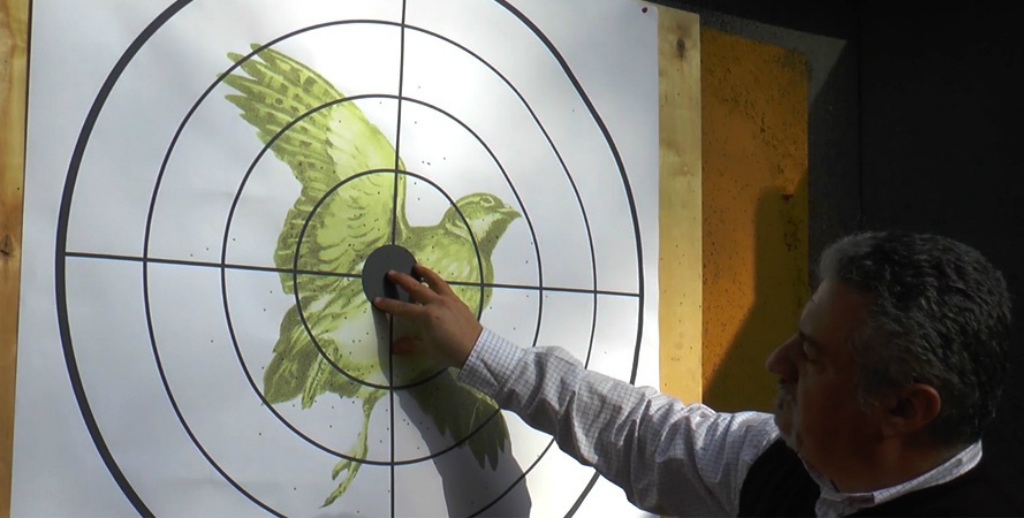
Now you’re ready to start checking the shot dispersion.
If you’re using your gun for hunting, the best range is the classic 36 meters, except for smaller bore sizes that should be tested at closer ranges better suited to the real range of the gauge.
A 20-gauge will have about 10 % less range than a 12-gauge so the best range for testing it is around 32 meters. A 28-gauge is usually tested at a range of 28 meters and a .410 at 25 / 27 meters.
Closer ranges (12 - 15 - 20 meters) are essential when testing spreader shells or guns with rifled/grooved or paradox barrels.
To do a sufficiently reliable test on your ammo you’ll need at least 5 shot patterns fired in the same conditions in terms of:
- Distance
- Barrel
- Chokes
- Cartridge
If you’re testing a lot of cartridges at the same time, you can reduce the above number to three shot patterns, but no less.
Shot pattern tests done on single sheets can be kept, tearing the sheet off the tripod and numbering it, while those on a metal plate should be photographed after every shot/cartridge.
In this case we recommend marking the metal plate with a reference number or code that matches any notes you might have written for each test.
When assessing the ballistic performance of guns and ammo specifically designed for hunting it may be a good idea to perform tests using the same combination at various ranges, to see how the ballistic performance of the gun and ammo changes at the typical ranges we do most of our hunting at.
Start by firing at least 5 shots at a close range of 15 meters, increasing the range progressively to 25, 36 and 40 meters.
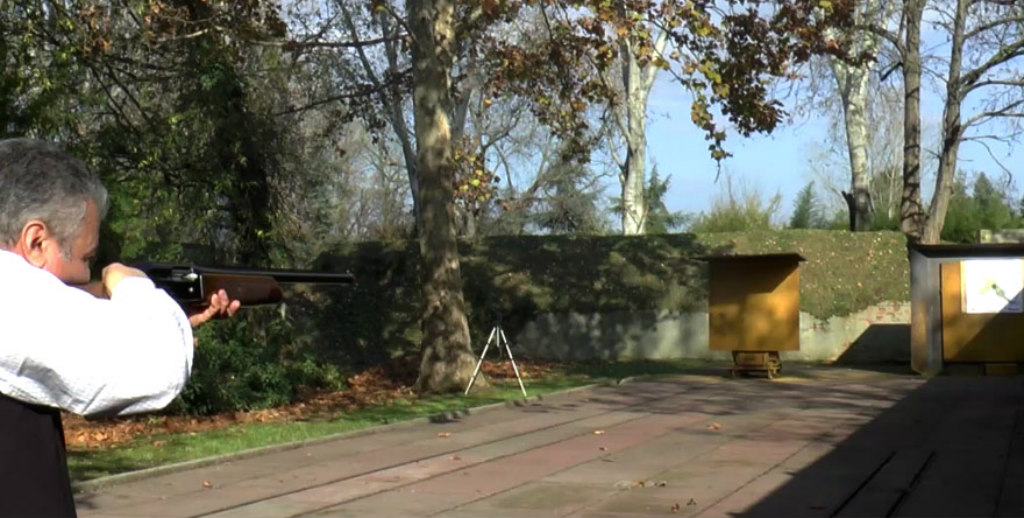
Like this, in a continuous and progressive way you’ll be able to see how the response of your gun changes with a certain choke and cartridge, assessing each time whether at the range you think is optimal at least the minimum required number of 5 pellets hit the target.
If you think your shot patterns are too compact and notice some gaps in which the target might be missed or perhaps be hit by less pellets, this is when you should do something about it.
How?
By changing one thing at a time.
Start with the cartridges, trying different types.
When you know that the effects on the spread are closely related to shell load and components, such as:
- The type of wad
- The type of case crimp
- The pellet size
- The number of pellets
you can start testing cartridges with different loads, wads and crimps.

In general felt wads, especially in a roll crimped case, produce a more generous spread.
After the initial assessment of your ammo, the best thing to do is try the same also with different chokes.
As you can imagine, there’s a lot of work to do.
The ballistic tests take more than just a few minutes and sometimes you’ll need more than a single session. To do an exhaustive, reliable test you’ll have to fire many shells and have a great deal of patience.
But the benefits will be hugely rewarding!
You’ll find the ideal ballistic performance for your gun in relation to the type of hunting you do and the game you want to hunt.
One last piece of advice: don’t trust your memory too much!
In time, you’ll forget the important results obtained in the tests. Write them down and always take note of all the results with any comments, creating a paper or photographic file with all the shot patterns you produced during the tests.
In this way, even a long time later you can still check and be sure to know what effect a certain shell or barrel or choke will have at various ranges.
It’s also important to note the weather conditions, the details of the shells used and any notes you think might be relevant. Nowadays with a digital camera or smartphone it’s easy to take photos and create a test archive.
To err is human, to persist in error is diabolical
Missing your target is always a disappointment. But what’s worse is if you start to suspect there’s something wrong with your gun and shells.
Chokes, in the same way, multiply the possibility of modifying your spread tenfold and should be tested so you know exactly what effect they’ll have in order to get the best out of them.
That’s why it’s important to test your own gun, chokes and shells. It’s a great chance to acquire confidence with your gun, which is essential both when hunting or in a competition.
The result?
After long and meticulous assessment of your tools the probability of a miss will be very low.
Chokes for smoothbore shotguns and barrel length
Even today there’s still a lot of confusion about the effect these two elements have on each other. A choke, as we’ve seen, has a direct impact on the size and regularity of your spread, your useful range and shot penetration.
So every hunter’s goal is to choose the right combination of cartridge and choke to suit the hunting conditions. In some cases this might go against the absolute concept that a longer barrel will give you a longer range than a shorter one in the same conditions. Strange eh?
Let’s consider a practical example!
The choke effects the range of modern hunting shotguns much more than barrel length. A 60 cm barrel could have a longer range than a 81 cm barrel if the latter was a lot less choked than the former.
So what do you need a long gun for?
A long barrel gives you various advantages, not just in terms of range, it’s also a great help for the perfect collimation of the targeted point, making it easier to hit the center of the target in more difficult conditions.
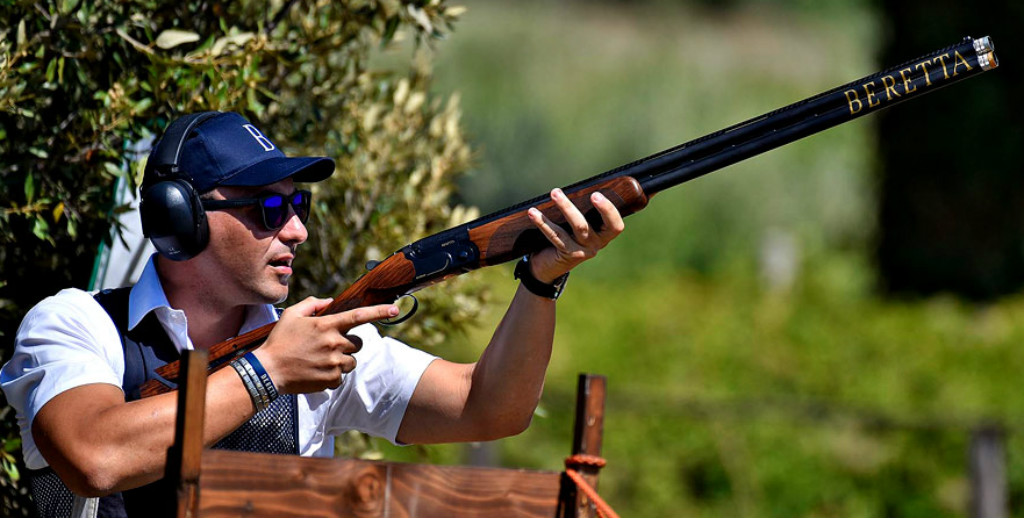
In fact, the longer the barrel, the longer your line of sight is.
That’s why long guns are still used for hunting in mountain passes, on English drives, when hunting waterfowl from a boat, and also in Trap or walked-up Sporting where you’ll be firing at targets at ranges of over 50 meters.
Furthermore, as a longer barrel makes a gun more balanced, it creates the ideal aiming conditions for shots taken at very sharp angles, preventing jerky movements or losing linear contact with the target.
Do you really need a Full Choke?
We’ve seen that chokes have evolved over a “certain time”, and to answer this question it’s important to consider the evolution of cartridges too.
Modern cartridges, thanks to technological innovation and through the intelligent use of various components, have been designed to continually optimize the moment in which the pellets leave the barrel, to produce more regular and compact spreads and conserve more residual energy with greater penetration at longer ranges.
It’s essential to remember that long shots or shots taken at extremely long ranges aren’t the norm, and are taken a lot less often than one might think.
The indiscriminate use of too much choke will inevitably mean more missed shots as the spread is very tight, and it’s more rational and preferable to use an intermediate choke letting game further away go, but being sure you’ve got a greater chance of success when taking shots at the countless game you’ll come across at medium ranges.
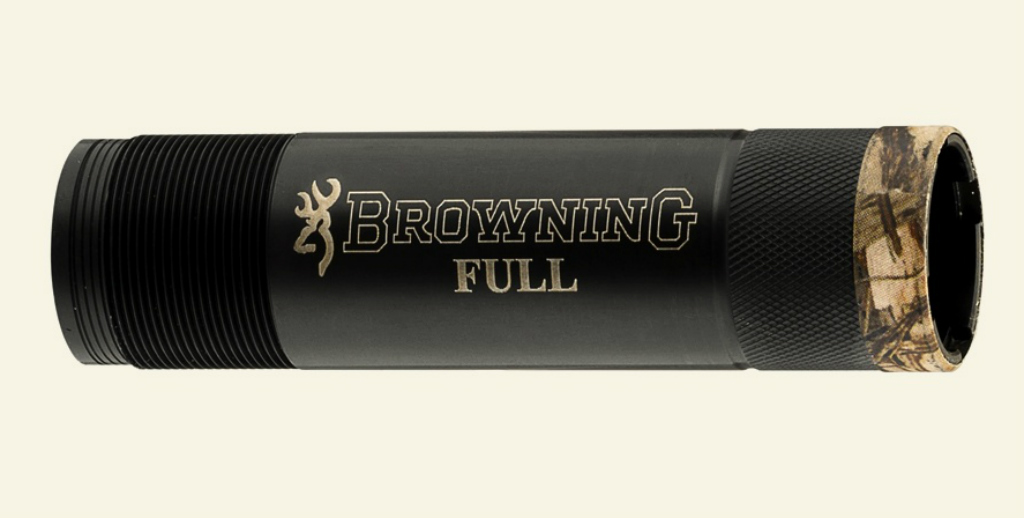
When hare hunting for example, the hare often runs fast right from under the hunter’s feet, and you’ll need a gun that hasn’t got too much choke or too long a barrel, at least at the start of the hunting season. The situation is different towards the end of the season when the hares know a trick or two, and more often than not will tend to run before you get too near.
When hunting, everyone is free, or rather should make it their duty, to experiment and find the ideal solution to suit their own habits and skills.
For example, reaction time varies from one hunter to the next.
Hunters who are faster when shouldering and aiming their gun, so-called "point-shooters", could choose a solution that’s optimized for hitting close range targets, so very short barrels, minimal choke and shells without a shot cup.
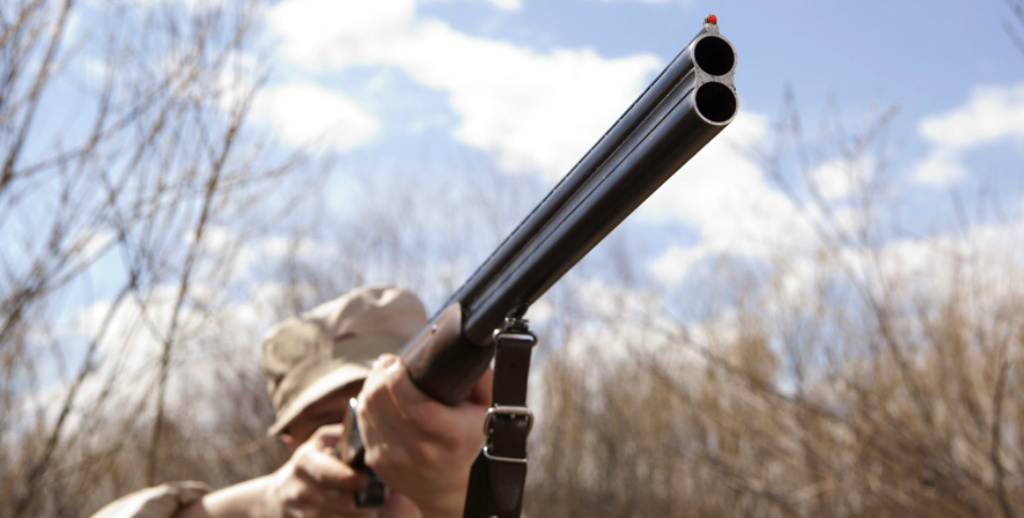
Hunters who take their time to acquire the target will be better off with longer barrels and more choke, better suited to hitting a target that’s moving away, using the "wing shooting” technique.
Finally, if you choose to use a barrel with a lot of choke you’ll have to remember to let most game get far enough away before taking your shot, otherwise it’ll be hard to hit what you’re aiming at and if you do it’ll be hit by a very high concentration of lead.
To do this you need a lot of experience, a good aim and more than anything, you need to keep your cool!
Shotgun choke maintenance
Interchangeable chokes are metal tube inserts that screw onto the end of the barrel or are blocked in this position by an external ringnut. As they’re thin, chokes are quite delicate and you should take care when handling and transporting them.
Today, most chokes are made of stainless steel, are chromed or have a rust-proof coating, but to be certain they won’t get stuck where they are you should remove and clean them frequently.
To clean your chokes you can use most of the same materials you use for your barrels, cleaning rods, brush and a steel wool pad.
Chokes can also be cleaned perfectly well in modern ultrasonic cleaners, widely used nowadays and no longer as costly as they once were. They’re used a great deal by those who reload metal shells to clean the cases.
When clean, the chokes must be coated with protective lubricants like Teflon, copper or molybdenum disulfide grease.
When you leave a choke on the barrel it must always be blocked firmly in place using the specific wrench to fit and remove it.
These thin tubes must be protected from knocks and should never be dropped. In fact, if they’re dented, especially around the mouth, this can cause a highly dangerous partial obstruction and could make the barrel explode when you fire the gun.
For this reason you should periodically check the chokes are geometrically perfect and there are no traces of deformation or dents.
Underlining and emphasizing the above, you should clean and lubricate your chokes often, because once they’ve been screwed on, dirt or rust can make them practically impossible to remove. In these cases it’s better to go take your gun to a skilled gunsmith who’ll remove them properly.
To wind up: it’s not always the fault of the chokes!
To conclude our little chat, I hope I’ve made it clear how important it is to use the right choke if you want to make it easier to hit your target, without creating difficulties such as too narrow a spread or destroying your game by hitting it with too much shot.
This is true both when hunting and in competitions.
Once you’ve found the best barrel / choke / cartridge combination, you should also consider your shooting technique.
Can it be improved? If it can, in what way?
This is your new starting point. As we’ve seen above, in consideration of various different chokes, there are several different solutions that are both versatile and effective for many types of hunting.

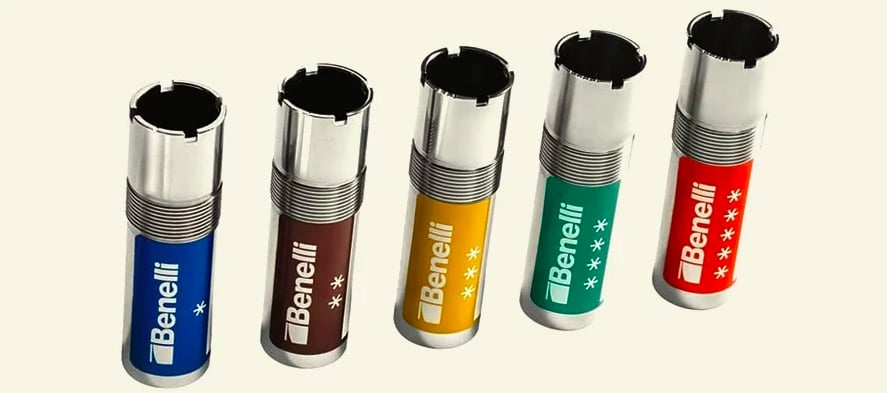
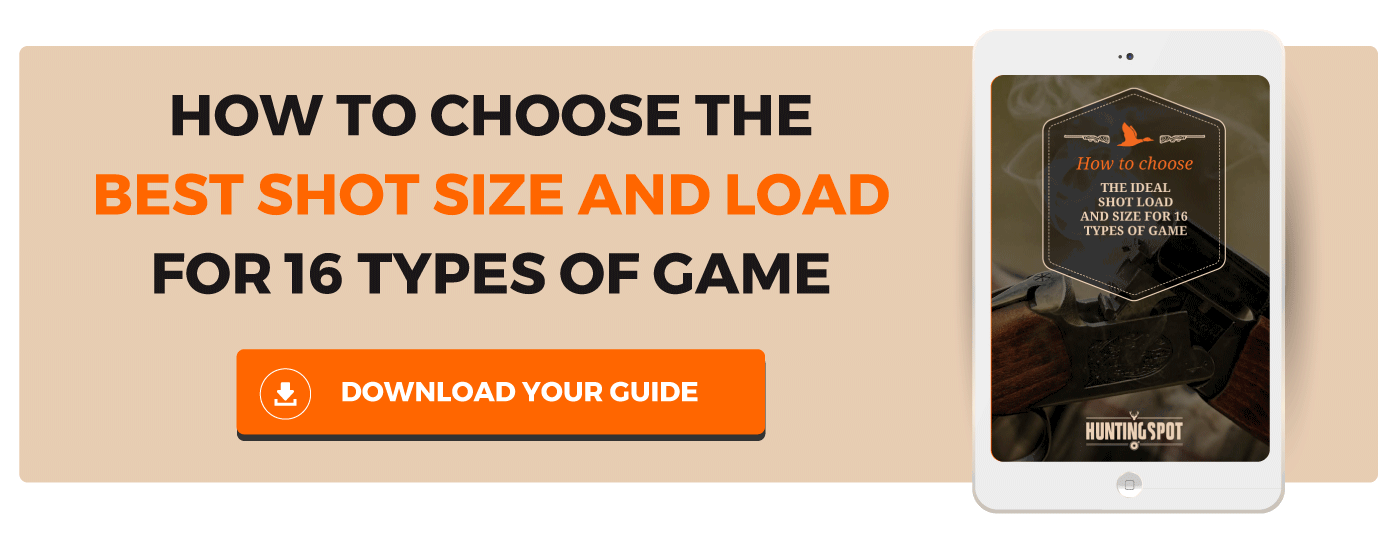
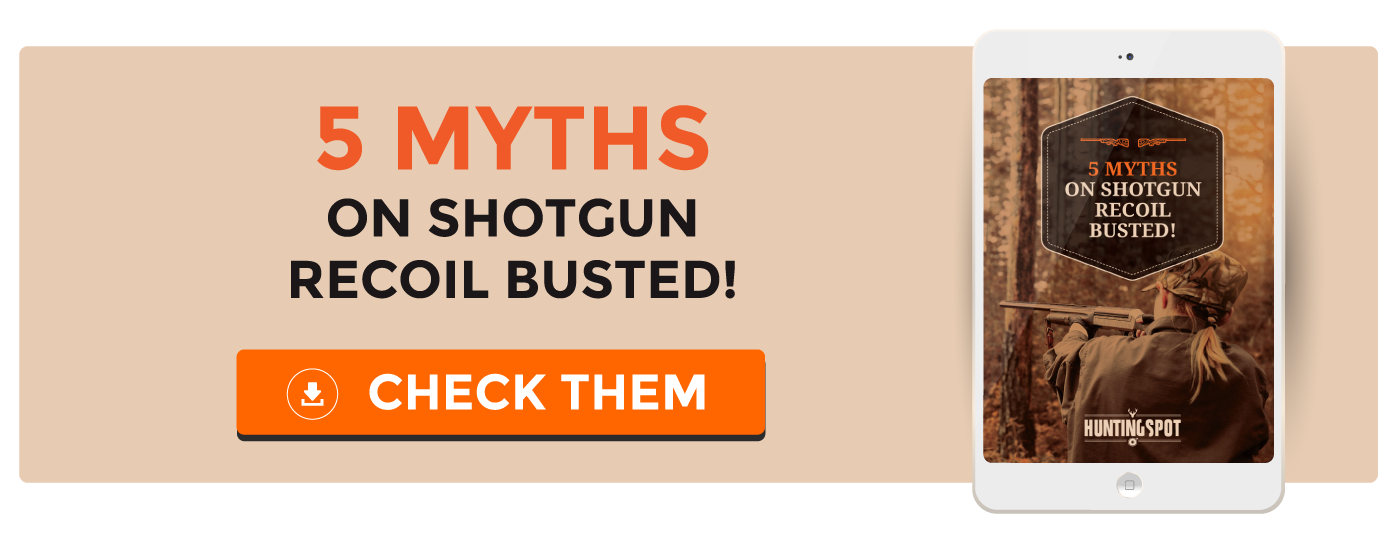

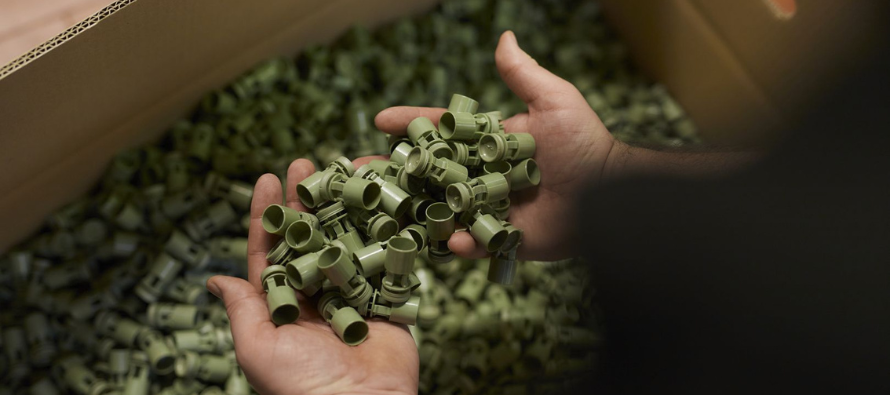

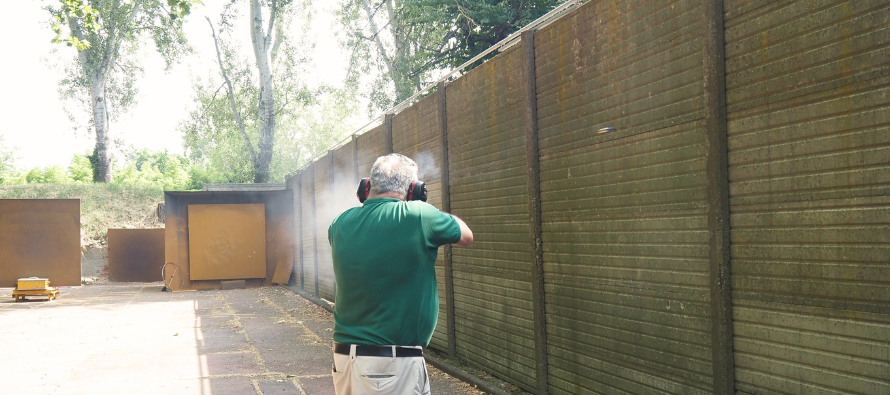
Comment this post